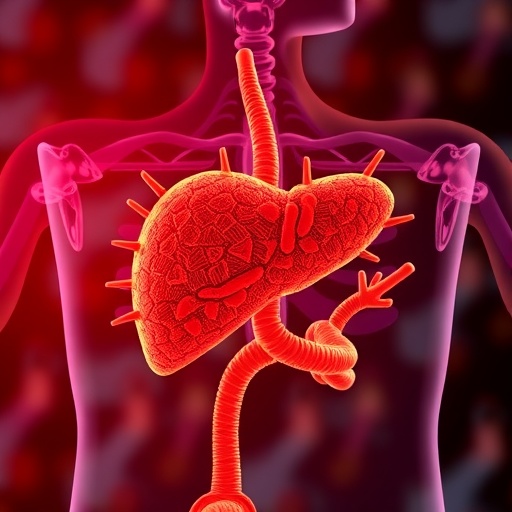Neurons in the prefrontal cortex "teach" neurons in the hippocampus to "learn" rules that distinguish memory-based predictions in otherwise identical situations, suggesting that learning in the present helps guide learning in the future, according to research conducted at the Icahn School of Medicine at Mount Sinai and published April 5 in the journal Neuron.
The study, led by Matthew Shapiro, PhD, Professor of Neuroscience at the Icahn School of Medicine at Mount Sinai, investigated memory flexibility and interference, the mechanisms by which the brain interprets events and anticipates their likely outcomes. The hippocampus is a temporal lobe brain structure needed for remembering recent events: for example, where you ate your last meal. The prefrontal cortex is where the brain uses context to switch flexibility between remembered rules, such as knowing to look left before crossing a street in North America but right before crossing in Britain. Without such rules, memories interfere with one another and predictions based on memory are inaccurate.
High-functioning individuals rapidly integrate memories with goals to choose their course of action. This cognitive flexibility requires interaction between the prefrontal cortex and hippocampus. Previous research indicates that interactions between these two brain regions are disrupted in many neuropsychiatric conditions, including schizophrenia, depression, and attention deficit disorder, but the mechanisms of these interactions have largely remained a mystery.
"We want to understand how our brains learn to think ahead and the mechanisms that use context to recall events, predict outcomes and inform decisions. For example, how does the brain know to answer a ringing telephone at home but not in someone else's house? " says Dr. Shapiro. "We found that 'rules' signaled by the medial prefrontal cortex 'teach' the hippocampus to distinguish goals, as rats learned to switch from one goal to another. We already knew that hippocampal cells predicted memory decisions through prospective coding, firing at different rates before rats chose different goals. We learned that inactivating the prefrontal cortex reduced prospective coding by the hippocampus. Furthermore, the more the prefrontal cortex altered hippocampal activity as rats learned one rule, the faster they switched to the next rule."
The research team tested spatial memory in rats using a plus-shaped maze in a task that depends on hippocampal function. The rats were trained to walk from the far end of a start arm (North or South) through a choice point to the end of one of two goal arms (West or East) to find hidden food. After the rat returned reliably to the rewarded spatial goal from each of the two start arms (e.g. "go East"), the opposite goal was rewarded and the animals had to learn a rule reversal (e.g. "go West"). The research team found that intact rats learned an initial goal and performed roughly three reversals each day, while rats with prefrontal cortex dysfunction learned only the initial goal; rats with hippocampal dysfunction learned none. This observation suggested that the prefrontal cortex might teach the hippocampus to differentiate goal-related memories.
To test this hypothesis, researchers placed micro-electrodes into both the prefrontal cortex and hippocampus and recorded the activity of ensembles of single neurons in both structures during learning and stable memory performance in the plus-shaped maze.
Because both brain regions were recorded simultaneously, the research team could test whether activity in one region changed before or at the same time as the other during different phases of learning and memory, as rats learned to approach one goal and switch to another.
"We found that neuronal activity was synchronized in the two structures, and that neurons in the prefrontal cortex modulated hippocampal place cell activity during learning," says Dr. Shapiro. "Prefrontal cortical and hippocampal cell activity predicted imminent choices, as though both structures were contributing to spatial memory retrieval."
They also found that the prefrontal cortex most strongly altered hippocampal place cell activity during reversals, just before a rat learned to reliably select a new goal. Moreover, the strength of the prefrontal modulation of hippocampal activity predicted how quickly the rats learned the next reversal. In other words, the more that the hippocampus "learned" what the prefrontal cortex "taught," the faster the rat learned the next rule.
Functional magnetic resonance imaging studies show how specific structures within the prefrontal cortex interact to use contextual information and modify emotional responses. These prefrontal dynamics are reduced in people suffering from depression and recover when depressive symptoms remit.
The new mechanisms uncovered by this study will likely improve our understanding of and inform new treatments for psychiatric conditions that involve hippocampal and prefrontal cortex interactions. Ongoing research is investigating whether the same mechanisms described in this study are at play between the hippocampus and other prefrontal structures.
###
About the Mount Sinai Health System
The Mount Sinai Health System is an integrated health system committed to providing distinguished care, conducting transformative research, and advancing biomedical education. Structured around seven member hospital campuses and a single medical school, the Health System has an extensive ambulatory network and a range of inpatient and outpatient services–from community?based facilities to tertiary and quaternary care.
The System includes approximately 6,600 primary and specialty care physicians, 12?minority?owned free?standing ambulatory surgery centers, over 45 ambulatory practices throughout the five boroughs of New York City, Westchester, and Long Island, as well as 31 affiliated community health centers. Physicians are affiliated with the Icahn School of Medicine at Mount Sinai, which is ranked among the top 20 medical schools both in National Institutes of Health funding and by U.S. News & World Report.
For more information, visit http://www.mountsinai.org, or find Mount Sinai on Facebook, Twitter and YouTube.
Media Contact
Elizabeth Dowling
[email protected]
212-241-9200
@mountsinainyc
http://www.mountsinai.org
############
Story Source: Materials provided by Scienmag




